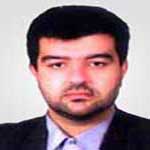Assessing the Effects of Strip Cutting methods on Soil Erosion (A Case Study: Chafroud Forest)
The present study reveals for the first time the rate of soil erosion using radioisotope method in the Hyrcanian forests, which were harvested three decades ago by strip harvesting. Based on the available records, the selected area in compartment 703 of Chafroud Guilan region was selected. In order to study the soil stability in field operations, a scraper plate was used to take samples in different depths of the reference area, from 2 centimeters depth up to 30 cm (maximum penetration depth of cesium). Then, in the reference, harvested and non-harvested areas, some samples were taken by core sampler. Samples were prepared according to IAEA guidelines and then, the quantity of their radiocesium was counted in the laboratory of Atomic Energy Organization. Finally, the mean 137Cs zones of the selected samples were 5894.1 Bq/m2. Therefore, in order to achieve the desired objectives of the study, three models named as MBI, MBII, and Proportional Conversion were used to reveal the erosion rate in which it was discovered that the non-harvested natural strips had some rates of 0.2, 0.7 and 0.6 t-ha-1-y-1, while in the harvested strips the rates were increased up to 8.87, 5.80 and 4.77 t-ha-1-y-1, respectively. Accordingly, it resulted in an average soil loss of 1.2 mm in the harvested strips and 0.9 mm in the natural parts per year and after 29 years of harvesting. Consequently, they can be considered as efficient methods in studying the forest hydrology and they also showed the protective role of forests in reducing the soil erosion.
-
Investigating the attitude of forest dwellers regarding the management of preservation and protection of natural resources in Guilan province
M. Safari, M.K. Motamed *, R. Naghdi, A. Omidi
Iranian Journal of Forest, -
Effect of slope and different intensities of rainfall using rain simulator on runoff and soil loss one year after forest fire (Shenroud Forest, Guilan)
M .Alidoust, R. Naghdi *, M .Nikooy, H.R. Peyrowan
Iranian Journal of Forest, -
Modeling the effects of climate change on rainfed and irrigated wheat production in Gilan province
Seyed Mohammadreza Mahdavian, Fatemeh Askari *, Mehran Gholami, Shariyar Sobhezahedi, Faezeh Shabanzadeh
Journal of Agricultural Meteorology, -
Estimating the Volume of Debris Flows along the Sijan Stream Using Topographic Surveys and CIVIL 3D
Rouhangiz Akhtari *, Majid Zareei,
Journal of Environment and Water Engineering, -
Soil Carbon Storage Trend in Various Types of Tree Stands in Shafarood Forests, Guilan Province
A. A. Vahedi*, Sh. Sobhzahedi, M. Alidoost, M. Matinizadeh
Iranian Journal of Applied Ecology, -
Zoning of Tidal Facies a Prerequisite of the Integrated Coastal Zone Management of Bushehr Province (Iran)
*, Mohammadreza Allahyar, Hamid Khalili, Rasool Ghanbari Moman
Journal of Marine Engineering,




